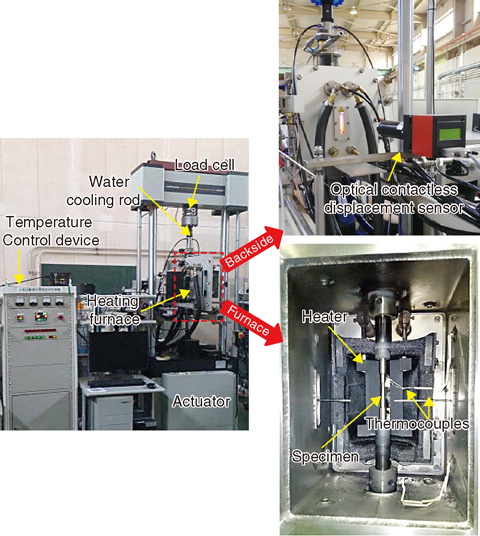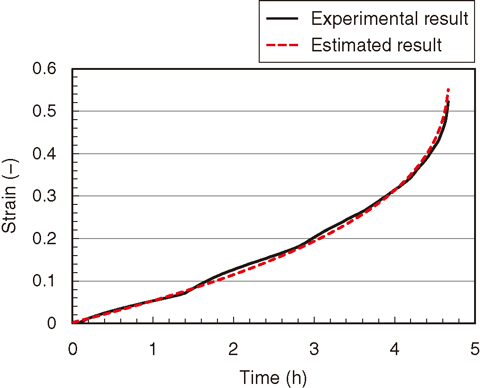
Fig.1-39 High-temperature tensile- and creep-testing equipment

Fig.1-40 An example of a high-temperature creep test and estimation results using a creep constitutive law
Following the accident at the TEPCO’s Fukushima Daiichi NPS, we are performing various studies using numerical analysis to estimate the rupture behavior of reactor pressure vessel (RPV) lower heads because of relocation of the molten core. It is necessary to obtain the mechanical properties near the melting points for materials at the lower head to analyze the mechanical behavior during a severe accident. Especially in the case that high-temperature, high-pressure loadings are applied, we need a creep constitutive law that can simulate creep deformation. However, since there is little data regarding the mechanical properties (such as tensile and creep properties) in the high-temperature region beyond 1100 ℃, we developed uniaxial tensile- and creep-testing equipment, as shown in Fig.1-39, and obtained data about the mechanical properties. We expanded the database of tensile and creep properties to a temperature of 1300 ℃.
![]() in Fig.1-40 represents a creep strain curve obtained experimentally at 1300 ℃ by a creep test. The specimen ruptured approximately 4.5 hours after it achieved 50% elongation. The strain rate rapidly increased just before the rupture, and this behavior is remarkable at high temperature. A creep constitutive law was investigated based on the obtained experimental data with consideration of such a tendency of the strain rate. Consequently, it was confirmed that a creep constitutive law considering material damage due to creep deformation can simulate the deformation to high accuracy, as well as the rupture time of the test specimens (
in Fig.1-40 represents a creep strain curve obtained experimentally at 1300 ℃ by a creep test. The specimen ruptured approximately 4.5 hours after it achieved 50% elongation. The strain rate rapidly increased just before the rupture, and this behavior is remarkable at high temperature. A creep constitutive law was investigated based on the obtained experimental data with consideration of such a tendency of the strain rate. Consequently, it was confirmed that a creep constitutive law considering material damage due to creep deformation can simulate the deformation to high accuracy, as well as the rupture time of the test specimens (![]() in Fig.1-40). To apply this creep constitutive law to numerical analysis, we confirmed its applicability to different temperatures and materials, and a database of parameters for the creep constitutive law including the high-temperature region up to 1300 ℃ was developed. Through the above investigation, we showed a prospect for estimating the rupture time of the lower head due to creep deformation when the temperature and loading at a certain time were determined based on numerical analysis.
in Fig.1-40). To apply this creep constitutive law to numerical analysis, we confirmed its applicability to different temperatures and materials, and a database of parameters for the creep constitutive law including the high-temperature region up to 1300 ℃ was developed. Through the above investigation, we showed a prospect for estimating the rupture time of the lower head due to creep deformation when the temperature and loading at a certain time were determined based on numerical analysis.
The creep constitutive law investigated in this study will be applied to failure analyses for RPV lower heads with the details being described in Topic 1-16, and will contribute to the estimation of rupture time and location of RPV.